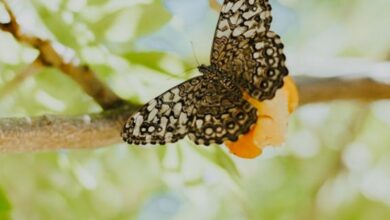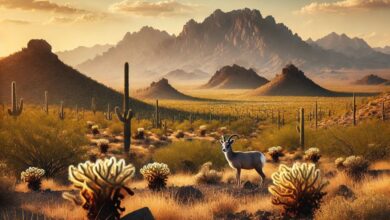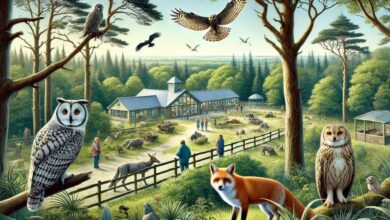Understanding the Greater Yellowstone Ecosystem News: Challenges and Conservation Efforts

The Greater Yellowstone Ecosystem (GYE) is one of the most iconic and ecologically diverse landscapes in the world, spanning over 22 million acres. It encompasses two major national parks—Yellowstone and Grand Teton—as well as various national forests, wildlife refuges, and private lands. Recent news surrounding the Greater Yellowstone Ecosystem highlights a variety of pressing issues, from climate change to wildlife conservation and Indigenous land management.
This article delves into the most important topics emerging from Greater Yellowstone Ecosystem news, providing a comprehensive overview of the region’s current state, ongoing conservation efforts, and the challenges facing this critical ecosystem.
The Impact of Climate Change on the Greater Yellowstone Ecosystem
One of the major topics in Greater Yellowstone Ecosystem news is the increasing effects of climate change on the region. Scientific assessments, including the Greater Yellowstone Climate Assessment, indicate that the area is experiencing rising temperatures that are affecting everything from snowpack levels to wildlife migration patterns. Over the next 50 years, the region is expected to see significant reductions in snowpack, which will affect the water supply for both human communities and the ecosystem.
This climatic shift is also impacting key species like the grizzly bear, which relies on certain food sources such as Whitebark Pine. As temperatures rise, the availability of these crucial resources diminishes, affecting not only the bears but also other species that depend on the ecosystem’s food chain.
Wildlife Conservation in the Greater Yellowstone Ecosystem
Another significant aspect of Greater Yellowstone Ecosystem news revolves around wildlife conservation. The GYE is home to a wide variety of species, including bison, elk, wolves, and grizzly bears. Conservationists are working tirelessly to protect these species from human activities such as logging, mining, and urban development, which threaten their habitats.
For example, recent efforts by the Greater Yellowstone Coalition aim to protect the bison population by expanding the boundaries of Yellowstone National Park. This would provide bison and other large mammals with more winter range, reducing the likelihood of human-wildlife conflict.
Indigenous-Led Conservation Initiatives
An emerging topic in Greater Yellowstone Ecosystem news is the role of Indigenous communities in conserving and managing the land. Tribal Nations like the Eastern Shoshone and Northern Arapaho have been actively involved in efforts to restore the buffalo population within the ecosystem. Buffalo are a culturally significant species for many Indigenous communities, and recent programs have focused on bringing buffalo back to Tribal lands.
The collaboration between Tribal Nations and conservation organizations is helping to integrate Indigenous knowledge into the management of the Greater Yellowstone Ecosystem. This partnership not only benefits the ecosystem but also ensures that Indigenous values and traditions are respected and maintained.
The Role of Private and Public Lands in Ecosystem Management
One of the unique features of the Greater Yellowstone Ecosystem is its combination of public and private lands. While national parks and wilderness areas receive significant protection, private lands are often subject to development pressures that can undermine the ecological integrity of the ecosystem. Greater Yellowstone Ecosystem news frequently highlights the importance of land conservation efforts that involve private landowners. Tools such as conservation easements and zoning regulations are being used to ensure that critical habitats on private lands are preserved.
In recent years, there have been discussions about expanding the boundaries of Yellowstone National Park to encompass more of the Greater Yellowstone Ecosystem. Such a move could protect additional land from resource extraction activities like logging and mining, while also preserving migration corridors for wildlife.
The Challenges of Human-Wildlife Interaction
As human populations continue to grow in areas surrounding the Greater Yellowstone Ecosystem, the frequency of human-wildlife interactions has increased. This has led to a number of conflicts, particularly involving large predators such as wolves and grizzly bears. Conservation groups are advocating for policies that better manage these interactions to protect both people and wildlife.
In Greater Yellowstone Ecosystem news, there is a growing call for more education and awareness programs aimed at reducing conflicts between humans and wildlife. Programs that teach people how to coexist with wildlife are essential for maintaining the health and safety of both animals and humans living in the area.
Protecting the Waters of the Greater Yellowstone Ecosystem
Another critical issue covered in Greater Yellowstone Ecosystem news is the protection of the region’s water resources. The Yellowstone River and its tributaries are vital for the ecosystem’s health, providing water for both wildlife and human communities. However, climate change and human activities are threatening these water sources.
Efforts are underway to protect the Yellowstone River from pollution, overuse, and the effects of climate change. Recent news highlights the need for better water management practices, particularly in the face of declining snowpack and earlier snowmelt patterns that reduce the river’s flow during the summer months.
Conservation Wins in the Greater Yellowstone Ecosystem
Despite the challenges, there have been significant conservation victories in the Greater Yellowstone Ecosystem. In recent years, the Greater Yellowstone Coalition and its partners have successfully secured funding and protection for critical wildlife habitats, including efforts to restore bison populations and protect migration corridors.
One of the most notable achievements is the establishment of collaborative programs that involve multiple stakeholders, including government agencies, conservation groups, and Tribal Nations. These partnerships are essential for addressing the complex challenges facing the ecosystem and ensuring its long-term health.
The Future of the Greater Yellowstone Ecosystem
Looking ahead, Greater Yellowstone Ecosystem news will likely continue to focus on the challenges of balancing conservation with development pressures. As the effects of climate change become more pronounced, the need for proactive conservation strategies will only grow. Collaborative efforts involving Indigenous communities, conservation organizations, and government agencies will be key to ensuring the ecosystem’s survival for future generations.
The Greater Yellowstone Ecosystem remains one of the last truly wild places in the United States, and protecting it is essential not only for the species that call it home but also for the millions of people who visit each year. By staying informed through Greater Yellowstone Ecosystem news, we can all play a part in preserving this extraordinary landscape.
Conclusion
In conclusion, Greater Yellowstone Ecosystem news serves as a crucial source of information on the challenges and conservation efforts in one of the world’s most important ecosystems. From climate change to wildlife conservation and Indigenous-led initiatives, the region is a focal point for environmental stewardship. As we face increasing threats to the ecosystem, continued collaboration and public awareness will be essential for ensuring that the Greater Yellowstone Ecosystem remains protected for generations to come.



